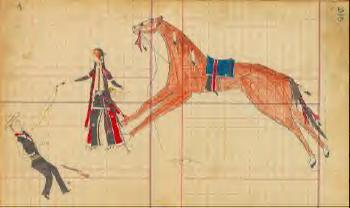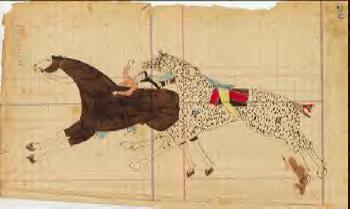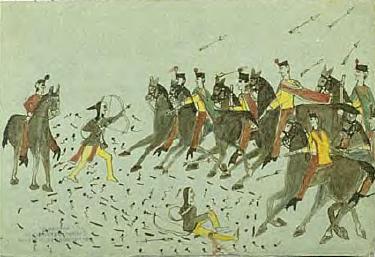|
|
Sand Creek Massacre Study Project
by Vicki from various sources
|
The Sand Creek Massacre project was undertaken at the request of Congress by the National Park Service in consultation with the Northern Cheyenne, Northern Arapaho and Southern Cheyenne and Arapaho Tribes of Oklahoma. The web site contains information on the investigation into the site, the history and significance of the site, and proposed alternatives for the management and use of the site. It also contains information on public meetings to be held regarding the project during the month of May, 2000 Public comment is currently being sought on the Sand Creek Massacre Special Resource Study. This document (also available on the web site) is intended to provide Congress with a professional analysis of whether the nationally significant resources of the Sand Creek massacre site in Kiowa County, Colorado, are suitable and feasible to be added to the National Park System. The Special Resource Study contains three distinctly different alternative concepts and management options for the protection, commemoration and public use of the site. The public comment period is from May 8 to June 8, 2000.
On November 29, 1864, without warning, the Colorado Volunteers, led by Col. John Chivington, attacked a peaceful band of Cheyenne, led by Black Kettle, on the banks of Sand Creek. The Volunteers indiscriminately killed women and children. Estimates of Indian deaths ranged from 150 to 500, with many historians favoring the higher number. This was Chivington’s sole decision. In fact, several officers under him insisted that to attack would be nothing short of murder, yet with the discipline of military men, obeyed their commander’s orders. Chivington returned to Denver a hero but his actions at Sand Creek were later investigated by three government bodies. Nevertheless, no charges were ever brought against him, and he later resigned from the Army.
When a Park Service archaeological team swept the area with metal detectors in May 1999, it found abundant evidence of the massacre. That evidence was the first step in establishing a permanent memorial. "It would be the first time the U.S. government has made a site of shame into a national monument," said David Halaas, chief historian for the Colorado Historical Society. "It cut across the tribes as no other massacre would. For the tribes, it was evidence that the U.S. government would commit genocide," said Halaas, who has worked on the project for seven years. A task force concluded that the site has national significance, possesses exceptional value as a cultural theme in the nation's heritage and hasn't been altered significantly since the event. Ledger Art by Cheyenne Prisoners at Fort Marion, Florida Tears in the Sand |
|
|
| Canku Ota is a free Newsletter celebrating Native America, its traditions and accomplishments . We do not provide subscriber or visitor names to anyone. Some articles presented in Canku Ota may contain copyright material. We have received appropriate permissions for republishing any articles. Material appearing here is distributed without profit or monetary gain to those who have expressed an interest. This is in accordance with Title 17 U.S.C. section 107. |
|
Canku Ota is a copyright of Vicki Lockard and Paul Barry. |
|
 A web site is
now available for the Sand Creek Massacre Project.
A web site is
now available for the Sand Creek Massacre Project. At the
Sand Creek Massacre, a Colorado militia force slaughtered at least 150 peaceful Cheyenne Indians who believed themselves
to be — and were — in the protective custody of the US Government. Following a rush of gold miners into Colorado
in 1861, the Cheyenne and Arapaho tribes were forced into the desolate Sand Creek reservation in southeastern Colorado.
When whites continued to pour into the territory, the Indians began to attack the stage coach lines to Denver and
commit other offensive acts to protect their territory. Nevertheless, the US Government officially wanted peace
with these tribes and had ordered the military to take no action against them.
At the
Sand Creek Massacre, a Colorado militia force slaughtered at least 150 peaceful Cheyenne Indians who believed themselves
to be — and were — in the protective custody of the US Government. Following a rush of gold miners into Colorado
in 1861, the Cheyenne and Arapaho tribes were forced into the desolate Sand Creek reservation in southeastern Colorado.
When whites continued to pour into the territory, the Indians began to attack the stage coach lines to Denver and
commit other offensive acts to protect their territory. Nevertheless, the US Government officially wanted peace
with these tribes and had ordered the military to take no action against them. "There
are a lot of stories from that place that will make you cry," said Chris Yellow Eagle, a descendant of Lame
Bear, who was at Sand Creek. "It is important to let people know the truth of what happened."
"There
are a lot of stories from that place that will make you cry," said Chris Yellow Eagle, a descendant of Lame
Bear, who was at Sand Creek. "It is important to let people know the truth of what happened."